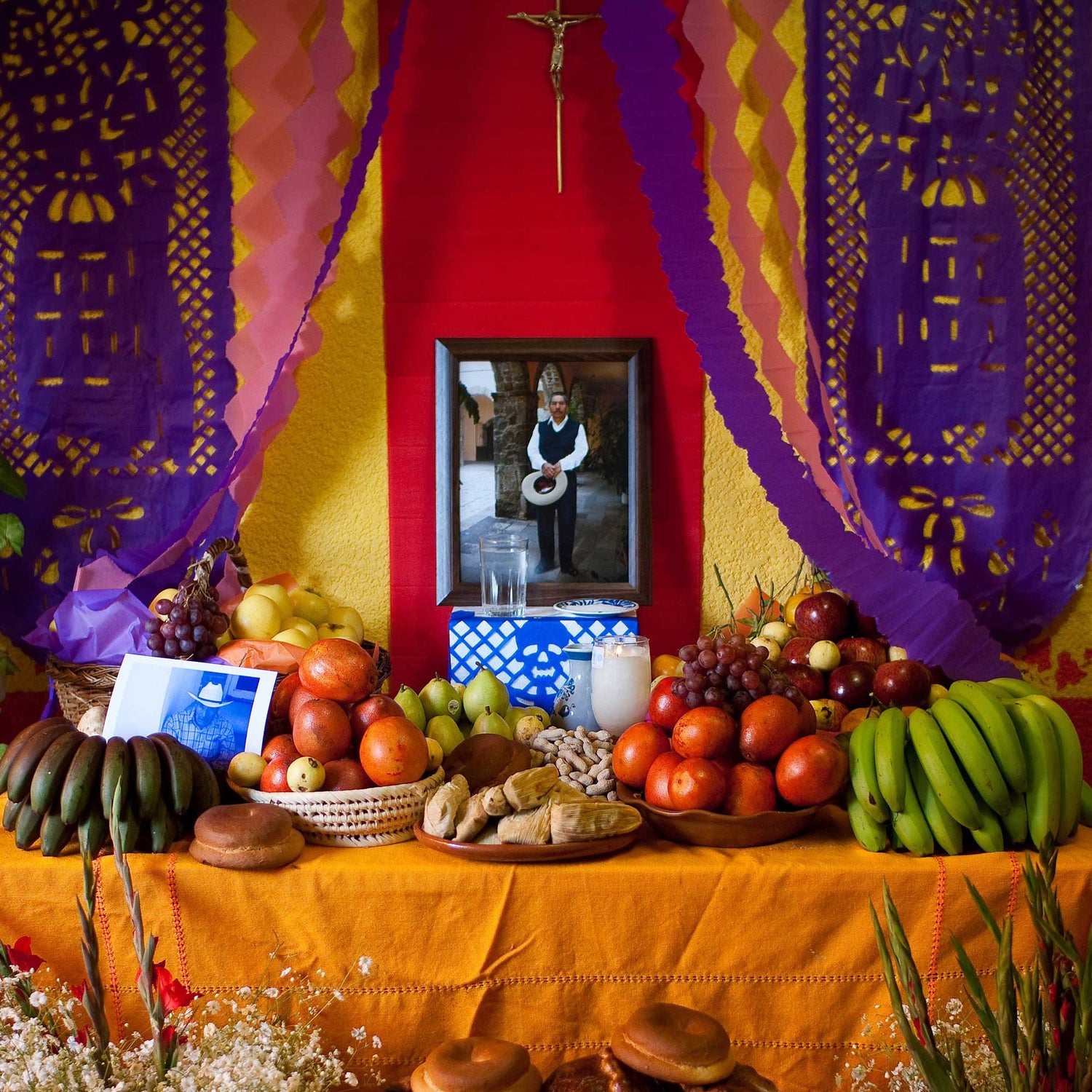Honoring loved ones who have passed away is a cherished tradition in many cultures, particularly in Latin American countries where the Ofrenda, or altar, is a central part of the festivities. The Ofrenda is a beautiful and meaningful way to pay tribute to those who have departed, and with a little guidance, setting one up can be a straightforward and fulfilling experience.
To begin, it’s essential to understand the significance of the Ofrenda. This altar is not just a collection of objects; it’s a symbol of love, respect, and remembrance. The setup typically includes a variety of elements, each carrying its own special meaning. For instance, photographs of the deceased are placed on the altar to honor their memory and to invite their spirit back into the home. These photographs serve as a powerful connection to the past, allowing family and friends to reflect on cherished moments and shared experiences.
Alongside the photographs, you’ll often find the deceased’s favorite foods, drinks, and other personal items. These elements are believed to nourish the spirit as it journeys back to the world of the living. Traditional dishes, such as pan de muerto, moles, and tamales, are commonly prepared and placed on the Ofrenda, filled with the aromas and flavors that the deceased loved. This sensory experience is meant to comfort and guide the spirits back home, where they can once again be among their loved ones.
Candles, marigolds, and incense are also integral components of the Ofrenda. The soft glow of candles represents the light that guides the spirits, while the vibrant marigolds are believed to attract the souls with their bright color and potent scent. Incense, with its fragrant smoke, is thought to purify and protect the space, creating a sacred environment for the Ofrenda. The scent of copal, a traditional Mexican incense, wafts through the air, transporting all who gather to a place of tranquility and reverence.
Setting up an Ofrenda can be a therapeutic and meaningful experience, especially when done with careful consideration and love. It’s a time to reflect on memories, both joyful and sorrowful, and to acknowledge the impact that the deceased had on our lives. As you arrange the elements on the altar, you’re not just creating a physical space; you’re crafting a bridge between the worlds of the living and the dead, ensuring that the bond between you and your loved ones remains unbroken.
When constructing your Ofrenda, remember that there’s no one “right” way to do it. The most important aspect is the intention and love that you put into it. You might start with a simple table or shelf, covering it with a vibrant cloth or papel picado, which are traditional Mexican paper banners. Then, begin adding the personal items, photographs, and favorite foods of the deceased. Don’t hesitate to include objects that held special significance, such as jewelry, books, or musical instruments, as these will serve as tangible connections to the past.
As you set up your Ofrenda, consider the story you want to tell about your loved one. What were their passions, interests, and quirks? Incorporating these aspects into the altar will make it a truly personal and meaningful tribute.
In addition to the physical setup, the process of creating an Ofrenda is also deeply rooted in tradition and ritual. Many families prepare for this time of year by cleaning and decorating their homes, symbolizing the welcoming of the spirits. The act of setting up the Ofrenda itself is often a communal effort, with each family member contributing their own unique perspective and memory, making the experience a powerful way to bond and heal.
Setting Up Your Ofrenda: A Step-by-Step Guide
- Choose a Location: Select a quiet, respectful area of your home where the Ofrenda can be set up. Ensure it's away from direct sunlight and moisture.
- Prepare the Space: Clean and declutter the area. This symbolizes the purification of the space and the welcoming of the spirits.
- Set Up the Base: Use a table, shelf, or even a box as the base of your Ofrenda. Cover it with a colorful cloth or papel picado to add vibrancy and tradition.
- Add Personal Items: Place photographs, favorite foods, drinks, and personal belongings of the deceased on the Ofrenda. These items should reflect the personality and preferences of your loved one.
- Incorporate Traditional Elements: Add candles, marigolds, and incense to your Ofrenda. These elements are crucial for guiding the spirits and creating a sacred space.
- Final Touches: Once everything is in place, take a step back and ensure that your Ofrenda feels personal and meaningful. You might want to add or adjust elements based on your family's traditions or the deceased's preferences.
As the day of the festivities approaches, the Ofrenda becomes a focal point of activity and reflection. Families gather around it, sharing stories, memories, and tears. It’s a time to laugh and cry together, to remember and to heal. The Ofrenda serves as a poignant reminder of the cycle of life and death, and the eternal bonds that connect us all.
Traditional vs. Modern Ofrenda: Balancing Heritage and Personal Touch
While tradition plays a significant role in the setup and significance of the Ofrenda, it's also important to make the experience personal and relevant to your own life and relationship with the deceased. Incorporating modern elements or personal touches can enhance the meaning and impact of the Ofrenda, making it a truly unique and heartfelt tribute.
In the end, the Ofrenda is more than just an altar; it’s a celebration of life, a testament to love, and a bridge between the past and the present. As you set up your Ofrenda, remember that the true essence of this tradition lies not in the objects you place upon it, but in the love, respect, and memories that you bring to the table. With each element, each story, and each tear, you’re not just honoring your loved ones; you’re keeping their memory alive, ensuring that their spirit continues to inspire, guide, and nourish you and your family for generations to come.
What is the significance of marigolds in the Ofrenda setup?
+Marigolds, with their vibrant color and potent scent, are believed to attract the souls of the deceased, guiding them back to their altars. They symbolize the sun and the light that guides the spirits through their journey.
How can I make my Ofrenda more personal and meaningful?
+Incorporate personal items that were significant to the deceased, such as their favorite foods, clothing, or hobbies. Share stories and memories of your loved one, and consider writing letters or creating art pieces that reflect your feelings and connection to them.
What role does tradition play in setting up an Ofrenda?
+Tradition is a cornerstone of the Ofrenda setup, providing a framework of meaningful elements and practices that have been passed down through generations. However, it’s also important to make the experience personal and relevant to your own relationship with the deceased, balancing heritage with modern touches and personal expressions.


